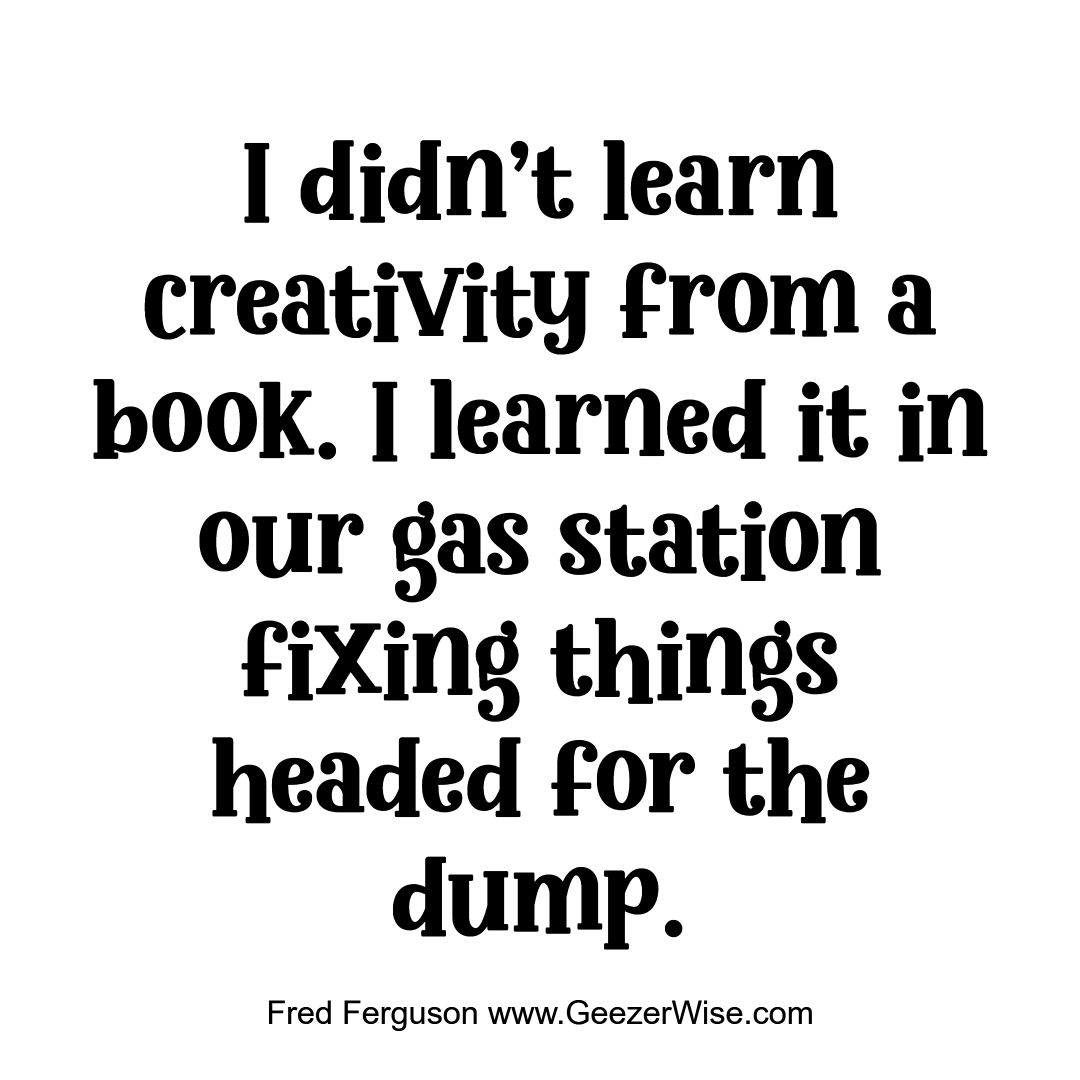The Six Skills That Gave Me My Creative Spark... Back in the Day
Letters to My Son… If I Had One By Fred Ferguson (GeezerWise)
Dear Son,
I didn’t learn creativity from a book.
I learned it fixing junk on the way to the dump.
That’s me, front and center at our family’s gas station in the 1950s. This is where I learned to spot value in junk, fix it up, and sell it — long before I knew what creativity even meant.
Back in the 1950s, I grew up around our family gas station. It was the kind of place where people came not just to fill their tanks, but to shoot the breeze, fix their trucks, and sometimes—without knowing it—give me my next business idea.
See, we were right on the road to the local dump. And a lot of folks drove past us with junk piled in the back of a pickup or rattling around an open trunk. Whenever someone rolled in and asked me to “fill ’er up,” I’d sneak a peek at their load. If I saw something busted I thought I could fix, I’d ask if I could have it.
Nine times out of ten, they’d say:
“Sure, kid. Take it.”
That’s all I needed.
I'd drag that treasure back to our garage, figure out what was wrong with it, fix it, shine it up, and then park it out front like a prize. And you know what? It usually sold.
Looking back, that little junk-hustling kid didn’t know it—but he was already living by a framework I wouldn’t discover by name until decades later. It’s called CREATE, from a book called The Creative Mindset by Jeff DeGraff.
Turns out, there are six simple creative-thinking skills that can help anyone build, fix, or innovate.
And I want you to know what they are.
The Six Skills of CREATE
1. Clarify
Don’t fix what doesn’t matter.
Back then, I had to figure out what was actually broken before I could make something useful out of it. That’s still true today. Clarity is the first tool in the box.
2. Replicate
Use what already works.
I didn’t invent how to clean rust or tighten a hinge—I watched old-timers do it. Learn from what’s already proven, then make it yours.
3. Elaborate
Add the finishing touch.
A busted lamp isn’t worth much, but a working lamp with a polished base and a clean cord? That’ll sell. Same goes for ideas. Dress them up a little.
4. Associate
Connect what doesn’t look like it belongs together.
Old wheels and a piece of wood? Boom—go-kart. A broken chair plus a car battery? Homemade polisher. The magic is in the mash-up.
5. Translate
Get it out of your head and into the world.
Nobody pays for what you might do. They pay for what you actually build. That’s true whether it’s a repaired blender or a blog post.
6. Evaluate
Not every idea is gold.
I had a few clunkers. We all do. The trick is knowing when to tweak it—and when to toss it back in the junk pile.
If I had a son, I’d want him to hear this:
Creativity doesn’t start in a classroom.
It starts when you see potential where others see junk.
It grows when you get your hands dirty, try something new, and care enough to make it better.
These six skills aren’t for artists.
They’re for survivors.
And for builders like you.
Filed under “Side Hustles,” because some hustles start before we even know what to call them.
This letter was written by Fred Ferguson (GeezerWise). If it spoke to you, I’d love to hear back—just hit reply.
💭 Got a question, memory, or topic you'd like me to write a letter about? Hit reply and let me know—I won’t respond individually, but I may turn it into a future letter. Consider it a suggestion box for the soul.
💌 Know someone who’d appreciate this? Forward it or invite them to subscribe at www.geezerwise.com.
⚠️ If you see a message below about pledging support—that’s Substack’s way of letting readers chip in if they want. Totally optional but always appreciated if this work means something to you.
—Fred [GeezerWise]



